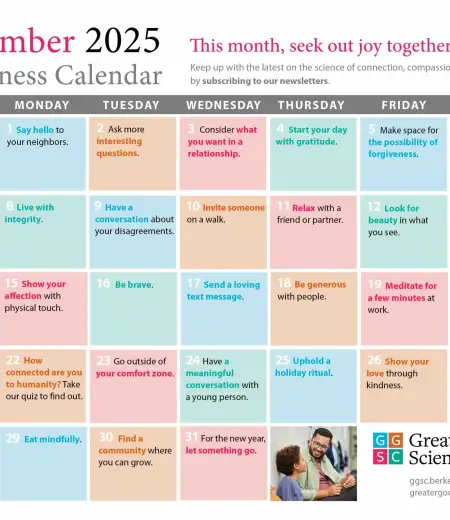One day when my sons Jesse and Peter were four and five years old, I looked around at our safe, all-white suburb of San Jose, California; at the landscaped, picture-perfect, nearly all-white elementary school my sons would soon be attending; at their nearly all-white friends—and I saw history repeating itself.
Forty years ago, I grew up in an all-white neighborhood in Manhattan. I went to an all-white elementary school. The first black person I ever saw was my second grade teacher. I was twelve before I had a conversation with an African American my age. When Harlem erupted in the wake of the Martin Luther King assassination, my father paced the floors at night, convinced that the “Negroes” were about to come marching downtown to get us.
I didn’t want my sons to grow up in that state of isolation and ignorance. I didn’t want to plant in my children the seeds of fear—the fear of the unknown that would bloom, later, into bigotry. And I didn’t want to leave the world the way I’d found it by raising another generation in segregation. So in 1984 I moved to a mixed, mostly black Oakland neighborhood and enrolled my sons in a mixed, mostly black Oakland public school.
Years later, our house was often filled with teenage boys. Jesse’s friends were all African American, all basketball players; they had Nike swooshes carved into their shaved heads and basketballs in their book bags. Peter’s friends were Chilean and Mexican and African American; they wore dreadlocks and Bob Marley t-shirts. On Sunday mornings the boys all went rummaging through our fridge together—Jesse’s friends looking for milk to pour on their Captain Crunch; Peter’s friends looking for soy milk for their granola—and my heart would swell with joy. This is what I had in mind. This is how the world should be.
But sometimes in the midst of one of those warm moments, I was chilled by thoughts of the disparities between black boys and white boys. Today, African-American students, mostly boys, are suspended and expelled at three times the rate of white ones. Forty-seven percent of black boys graduate from high school, compared to 75 percent of white male students. And in California today, forty percent of African-American males between the ages of 18 and 25 are either in jail, on parole, or on probation.
I’d look around my living room at these young men I’ve loved since they were five or ten or fifteen years old, these boys who live in my heart as surely as if they’d once lived in my body, and I’d wonder: Which four won’t make it?
When my boys were in high school, I went on tour for my first book, What It’s Like To Live Now, reading stories about my kids and our neighborhood. In every city, at nearly every reading, a white woman in the audience would raise her hand and ask the same question.
“How can you do that to your children?”
“Do what?” I’d ask, knowing what the answer would be. “Raise them in the ghetto.” “Send them to inner city public schools.” “Expose them to so much violence.” None of the women said what she really meant: “Subject your middle-class white kids to the dangers and deprivations that only poor black kids are supposed to be subjected to.”
“Sometimes I question my decision,” I’d answer honestly, thinking of the long nights when I sit by the phone with my heart in my throat because my kids are 10 minutes late; and the anxious days when I look at the Cs on their report cards and wonder if private schools or suburban schools could have turned my boys into “college material.”
And then I’d think about my sons’ passion for justice; their intolerance of intolerance; their deep friendships with people of races and cultures different from their own, and how those friendships have rooted them in what they call (and shifting demographics indicate is, in fact) “the real world.”
“Mostly I’m glad I raised my kids the way I did,” I’d say then. “Every parent has regrets. If I’d raised my kids in a white suburb, I’d have regrets about something else.
“I don’t want my kids to grow up the way I did, in an all-white bubble. I think the best way to start solving the problems every parent worries about—crime, drugs, poverty, under-funded schools—is to start dealing with racism in society, and in ourselves. And the best way for white parents to do that is to start making different choices about how we raise our kids. The default mode is segregation. That’s how we got where we are now.”
This is what I said, and this is what I still believe. But I said it gently, with compassion, because I knew how difficult it is to be a white parent and choose to make the joys and sufferings of African-American children the joys and suffering of our own.
I know how wrenching it is to go to back-to-school night and listen to teachers begging for scrap paper and volunteers, instead of talking about grades and curriculum. I know how enriching and how painful it is to love black boys, to welcome them into my family and my heart, and watch them grow up with shopkeepers following them around in stores, cops shining flashlights in their faces, white people crossing the street to avoid them. I know the despair it evokes to be close enough to black boys to overhear the message they get on a daily basis: that nothing—or worse—is expected of them, and nothing—or worse—will be offered to them.
I know, too, that it benefits no one for white parents to “care about” the fate of black boys in the abstract, or moralistically, or patronizingly. What moved me to go to school board meetings and argue for smaller, more relevant classes, more guidance counselors, more nutritious school lunches; what moved me to stop and make my presence known when I see shopkeepers or police officers confronting African-American boys; what moved me to work with my neighbors to put the crack dealer on our block our of business is that I had invested my children in the outcome.
Twenty-five years after I made the decision to cast my sons’ fate with kids from a different race and class, the results are in. My boys are alive and doing well. Peter is an L.A. and New York-based photographer shooting album packages and promo portraits for hip-hop artists. His Oakland upbringing gives him the street smarts he needs to relate to his subjects; his middle-class background gives him the “office smarts” he needs to relate to the executives and art directors who give him his jobs.
Jesse, so far, has stayed closer to home, metaphorically and geographically. He’s a gifted visual artist and a dedicated social worker whose clients include drug-addicted teenagers, disenfranchised seniors, and homeless veterans. He’s happily engaged to an African-American woman who is the joy of his life, and our family’s. Grandchildren? I’m waiting, optimistically.
But what about the boys they grew up with? Many of them, too many, are indeed dead, in jail, or on the streets. Because they’re not African American, Jesse and Peter were grazed, not wounded, by the stray bullets of racism that were aimed at their friends. But my sons grew up in a mostly black neighborhood, and they were educated in mostly black public schools. So they are motivated, as I am, by love and by self-interest—a powerful combination—to raise the level of the river beneath the boat we’re all in together.
Wherever and however we live, every child, every parent, every family can help bridge the racial gulf that divides our country, and divides us from each other. Parents who live in mostly white neighborhoods or send their kids to mostly white schools can do much to give their kids the values and the experience they’ll need to live in an increasingly diverse world. Parents can teach tolerance at the dinner table, and buy their kids toys and take their kids to events that celebrate diversity. They can agitate at their kids’ schools for multicultural school boards, faculty, curriculum, textbooks, library collections, and assemblies. They can urge their PTA’s to co-sponsor events with inner-city PTA’s. They can get their kids onto racially mixed sports teams, and take their kids to racially mixed after-school care centers and religious services.
Recognizing these possibilities, as white parents we also recognize the responsibility we share: to stop being part of the problem and start being part of the solution. I have no doubt that our children are smart enough, resilient enough, and open-hearted enough to meet the challenge.
The question is, are we?
 ©
© 



Comments
I can relate to the fact that it is important to grow up in a multicultural environment and experience the social behaviour of other cultures. People that are isolated from other cultures (an all-white bubble as the article states) tend to have their opinions fed by negative outings of the media and can therefore feel uncomfortable towards other ethniticies.
New hip hop releases | 2:25 am, June 14, 2011 | Link